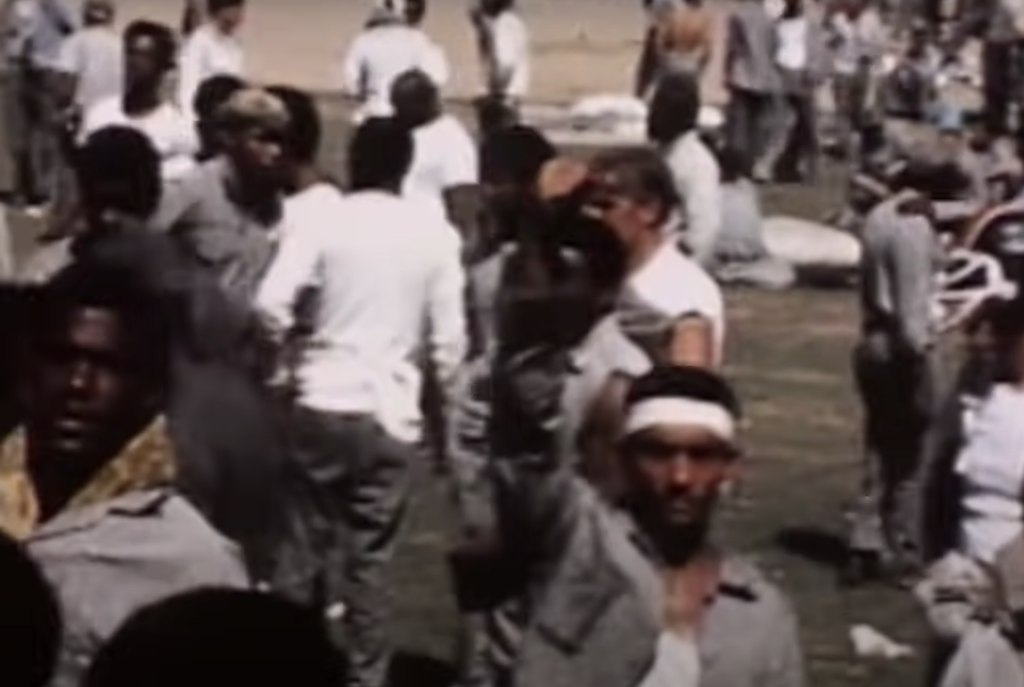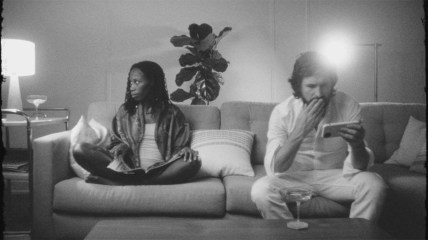TIFF Review: ‘Attica’ displays masterful storytelling of America’s largest prison rebellion
OPINION: Five decades after these events of a massively reported rebellion and yet "Attica" manages to make it as shocking and visceral as if they just happened
It’s been 50 years since the Attica Prison Uprising in New York became the largest — and bloodiest — prison rebellion in U.S. history. A myriad of people were injured and 39 people died, including 29 inmates. And throughout writer-director Stanley Nelson’s detailed new documentary, simply titled Attica, there is a singular sentiment repeated: “All we wanted was the basic necessities of being treated like human beings.”

Basic, as some of the now former inmates of the toughest penitentiary in the country state in the film, meant things like toothpaste, proper food, clean clothes. “Personal hygiene things,” as one explains. It becomes clear why Nelson continues to circle back to this point about humanity in Attica; to compel audiences to understand that this was all the inmates were after during those four fateful days in September — and that resulted in a massacre.
But former inmates aren’t the only ones sharing their perspectives of what happened during the uprising. It was a heavy, multilayered and deeply complex plea for clemency that went all the way to the presidential level (where it was effectively disregarded). Though Attica is at times dense, due to the chaotic nature of the events, Nelson takes a more panoramic approach to give audience a fuller picture of what happened.
The filmmaker, known for delving into other systemic issues throughout history like The Black Panthers: Vanguard of the Revolution, interviews late New York State Senator John Dunne, who served on the Observer Committee, which was assembled to essentially meditate the dangerous situation.

Clarence Jones, then editor in chief of the renowned Black newspaper, the New York Amsterdam News, also gives a vivid testimony of his efforts to negotiate on behalf of the inmates, which disintegrated following the death of a guard. “I will never ever, ever, ever, ever, ever forget Attica,” he says. “It didn’t have to be that way.”
It didn’t. But as he himself puts it in the film, when you go up against law and order, they come for you. That, too, can be a takeaway from Attica. Former inmates like Alhajji Sharif, Daniel Sheppard, George Che Nieves, and Tyrone Larkins provide harrowing accounts, including when the men had ultimately surrendered and were stripped and beaten before they even made it back to their cells.
Nelson illuminates all sides of the tragedy by including interviews with members of the national guard, political councils, relatives of the all-white guards, and reporters like John Johnson and Stewart Dan, who were on the ground covering the story, nearly frozen in shock about what they were witnessing.
With remarkable access, the director interweaves this with photos and surveillance video from inside the prison, including footage of tearful and frustrated family members of hostages, Black Panthers advocating on the prisoners’ behalf, and prisoners corralled like animals once officials regained control.
Five decades after these events of a massively reported rebellion and yet Attica manages to make it as shocking and visceral as if they just happened. Perhaps that’s because mass incarceration still disproportionately impacts Black and brown men, or because, like 50 years ago, government still does little to nothing about it, or because the need to restate Black humanity — even throughout this one film —remains as insulting as it is powerful.
While audiences will certainly bring these persistently relevant issues to the film, on its own it is masterful storytelling in the vein of last year’s equally remarkable MLK/FBI. Even the way Nelson pulls back to expose the true dichotomy of Attica, the working-class, white New York town, is intentional. It shows not only how deep the issues stem, but also that heinous prison conditions existed in an otherwise idyllic town filled with persevering white families. It was just tucked away.
Years later, even white former prisoners like David Brosig that are interviewed in Attica, now realize the unequal treatment between Black and brown people and themselves. “I was white, so I was always given a little extra leeway,” one says. “I was always able to manipulate the system because I was a white guy. I am almost afraid to say that I took advantage of that.”
But, in the midst of the uprising when things still seemed at least a tad promising (meaning: the inmates at least got the attention of officials, who were listening — though not really heeding — their demands), there was unity as they made tents and found food to eat. “We came together as a community,” one recalls. Another takes it even further: “It was a festive time. We were free.”
Still, Nelson isn’t the type of director that hits you over the head with exposition. With the single exception of James Brown’s “Give It Up Or Turn It A Loose,” he rarely even employs the use of recognizable songs to heighten the story he tells.
Instead, he takes a more journalistic approach and shares facts — from various viewpoints. Considering everything that happened — from the early phase of the uprising, to the increasingly desperate pleas to both the government and prison authorities for humanity to the violent surrendering — that is compelling enough.
Have you subscribed to theGrio’s new podcast “Dear Culture”? Download our newest episodes now!
TheGrio is now on Apple TV, Amazon Fire, and Roku. Download theGrio today!


